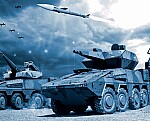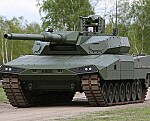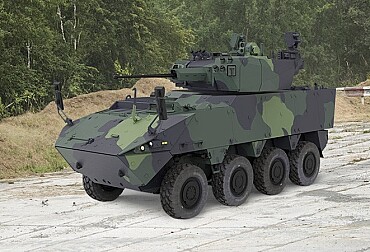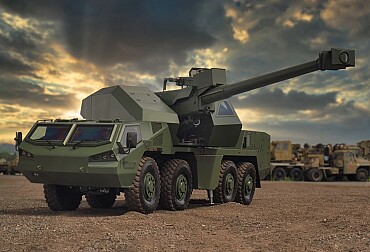There is no 'God of war'
I hope I won't be hit by any precisely guided artillery munition for this opinion. But it isn't really about blasphemy or provocation towards artillerymen. It has been confirmed that artillery can inflict heavy losses on the enemy and determine the course of the battle. But under what conditions? And who or what creates them?
Is it possible to express the effectiveness of weapon systems?
The effectiveness of weapons or ammunition depends on the way they are used. In order to be successful artillery primarily needs to obtain data about the targets. These data musn't be current but more comprehensive they are the more effective the artillery's actions will be. For example in addition to the target's location (coordinates) at a specific moment we will also be interested in data about its future movement or other enemy activities. Without access to this information our howitzers and other artillery assets could become nothing more than expensive scrap metal or potential targets for the enemy's weapon systems. One of the prerequisites for the effectiveness of artillery will be the timely receipt and sharing of the necessary information within the digitalization of the battlefield (common operating picture) and ensuring interoperability with NATO members. This requirement along with the current need for C2 (command and control) standards for the Czech Army's artillery will help integrate the Fire Control System (FCS) ADLER III CZE into the ground forces' command and control system. Furthermore it is necessary to create conditions for the future integration of this FCS into the digital close air support system. An essential requirement is also the integration of all systems (sensors and effectors) in accordance with the C4ISTAR architecture.
The significance of the used ammunition
Another significant aspect of artillery effectiveness will lie in the used ammunition. In this case we will be interested not only in the range and impact efficiency but especially in precision. With precisely guided ammunition we not only require a smaller quantity of ammunition to fulfill firing tasks but can also accomplish assigned missions much faster thus significantly reducing the risk of our own artillery elements being destroyed by enemy fire. The importance of ammunition continues to grow. Recently we have heard about American HIMARS rocket launchers (M142 High Mobility Artillery Rocket System) which can launch guided missiles with various ranges of up to 300 km. The mere range of this ammunition compels the enemy to take measures in response to the threat of attacks especially targeting command centers, ammunition or fuel depots, bridges, and other objects crucial for conducting combat operations, military mobility, and logistical support. Moreover due to their range and mobility they are difficult targets to locate and destroy by enemy.
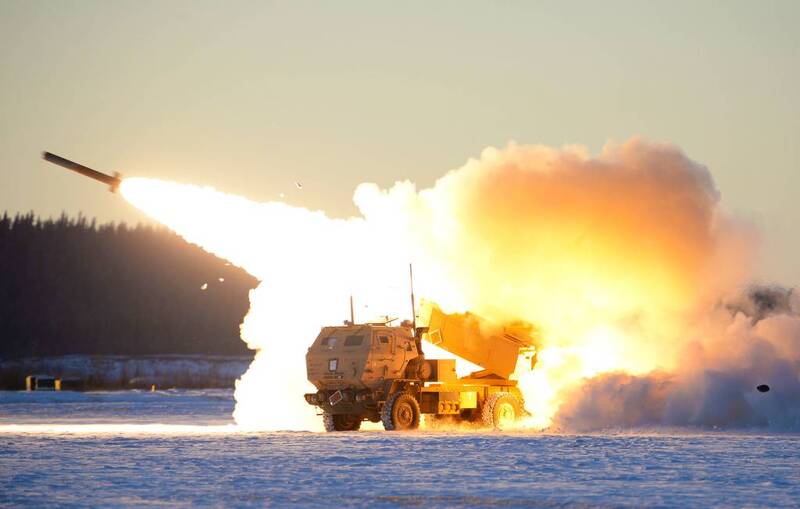
How can Terrain and Weather affect battlefield
The battlefield will always be significantly influenced by the terrain and the weather. The weather itself will represent specific conditions for conducting combat operations which could be used as benefit but cannot be ignored or underestimated. The weather will also affect the terrain which we could have seen for example in the battles in Ukraine. It can change terrain into a muddy and swampy landscape during rainy weather. The passability of the terrain affects the mobility of equipment and places specific requirements on its use. For example in muddy terrain tracked vehicles will have an advantage over wheeled ones. In this context the right balance between firepower, ballistic protection, and mobility has to be considered. The use of terrain is especially important in defense. The terrain itself creates a series of natural barriers that can be suitably complemented by engineering obstacles or used for fortification work and the placement of weapon systems. For example for artillery a rugged terrain will place higher demands on gathering information about the enem, including assessing the targets of their firing influence. Artillerymen must also be able to work with the effects of the weather. This concerns not only movements (including rapid changes of firing positions) but also the conditions for conducting fire.
What does engineers have in common with artillery
Military engineers are typically associated with bridge construction and maintenance of communication routes, fortification works, clearing obstacles or creating them. Latter tasks of the engineering units involves not only setting up non-explosive barriers but also establishing explosive barriers which mainly includes setting up minefields. For effective use of minefields a crucial prerequisite will be the correct assessment of the terrain and the related placement of minefields. However significant importance will lie in the coordination with other types of troops primarily with mechanized forces,infantry units and also with artillery.
How can be obstacles used as the advantage of artillery
When planning combat operations especially within a defensive strategy the goal will not be only to impede the enemy's advance but also to destroy as many attacking units as possible with an emphasis on heavy equipment such as tanks and APCs. Skillful utilization of obstacles especially anti-tank minefields aims to channel the enemy's equipment into areas adequately covered by our artillery fire. The narrow bottlenecks created by these obstacles will restrict the enemy units' movement and expose their concentrated formations to devastating firepower
Use of Rocket Launchers
Based on the experiences from combat in Ukraine it can be said that rocket launchers of various calibers continue to play an important role within artillery. Due to their destructiveness, precision, and speed of execution, they are and likely will remain highly effective means in the future. The ability to launch a variety of munitions such as rockets or guided missiles within a short time frame and subsequently change their firing position is a significant capability of this weapon system. In the case of using cheaper rockets with substantial area-effect damage. This effect can be increased by using cluster munition or ammunition with thermobaric effects (the detonation of dispersed explosive aerosol results in an explosion approximately twice as powerful as conventional munitions, with temperatures at the epicenter reaching 800 °C).
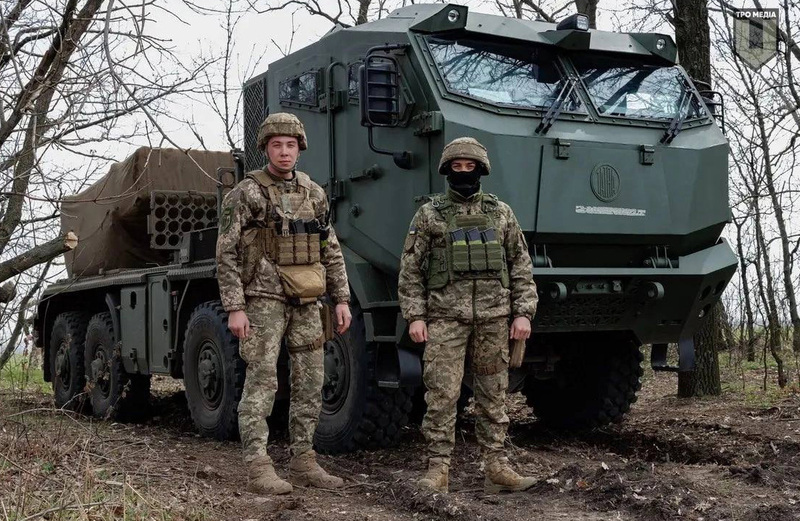
Thermobaric munitions can also be utilized for demining larger areas due to their overpressure. Rocket launchers with appropriate munitions can be further deployed to establish minefields allowing flexible influence on the enemy's avenues of advance. Another potential use of rocket launchers may include the rapid deployment of Unmanned Aerial Vehicles (UAVs). In connection with the requirements for variability of missile launchers - multifunctional solutions of superstructures (launchers) including modular solutions (also in the form of different configurations of containers) are preferred, which will be purposefully used in accordance with the requirements for conducting combat operations.
Experience from Ukraine
It is evident that traditional emphasis on artillery are well-maintained and further developed on both sides of the conflict. Considering the use of reconnaissance assets including the widespread deployment of UAVs on both sides camouflage and deception are existentially important, as well as rapid relocation after firing. Changing exposed positions within the capabilities and assigned tasks is crucial for other elements of the armed forces particularly those on the front lines.
The Ukrainian army facing a larger number of Russian artillery systems also use tactics involving the independent deployment of artillery assets to make it less vulnerable to counter-battery fire or evade the attention of Russian reconnaissance assets. One noteworthy feature of reconnaissance assets (essentially UAVs) is their ability to serve as both reconnaissance tools and means of destruction known as "loitering ammunition." This combination allows this type of munition to loiter over an area of interest for a period and then engage a selected priority target. Currently the Russian side is deploying this munition extensively when repelling attacks by Ukrainian units. One of the reasons for this is not only its high effectiveness in terms of range and precision but also its relatively low acquisition costs.
What else affects artillery effectiveness
The Ukrainian conflict has reminded us the need for sufficient ammunition reserves and production capacity. Mutual support and cooperation within NATO are also crucial in this area. This relates to achieving interoperability and the development of standards that should enable interchangeability of ammunition of the same caliber. Currently there are discussions not only in the context of the conflict in Ukraine to ensure that standardized 155mm ammunition can be used with various types of 155mm howitzers.
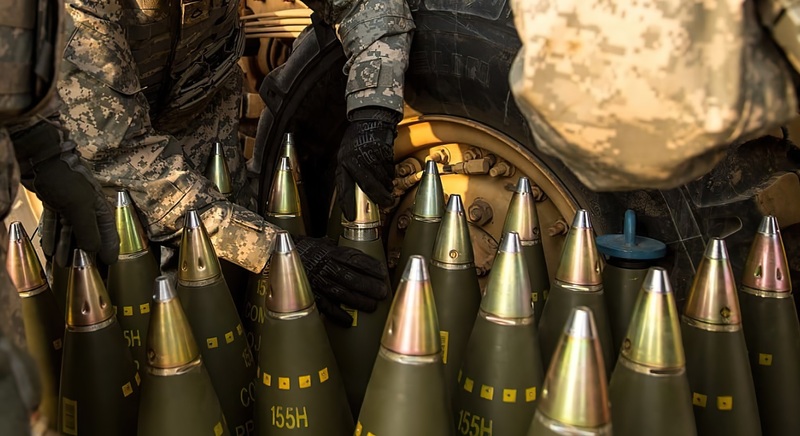
In addition to adequate stocks of usable ammunition it is necessary to establish sufficient logistical support capacity. It should be taken into account that higher ammunition reserves require the construction of storage facilities with the necessary equipment and the acquisition of appropriate transportation capacity for their delivery and supply to units.
Trends
We must learn to leverage new technologies and tactics for the use of weapon systems and military units. For instance in the field of artillery one trend is transitioning to a larger number of mobile systems with shorter ranges that still cover a sufficient area and the destruction of one unit doesn't jeopardize mission success. Another trend is the production of artillery equipment particularly ammunition with greater range and precision. New requirements will be placed not only on precision-guided ammunition such as resistance to jamming or the speed and method of delivery. Especially for guided missiles increased protection against interception will come from their increasing speed.
In this context it is evident that there will be increasing demands for the adoption of new measures not only in artillery. One solution will be the implementation of automated systems using artificial intelligence (AI). With the development of various types of UAVs (Unmanned Aerial Vehicles) and "loitering ammunition," a significant portion of enemy capacity destruction tasks will be covered by these means which in many cases already represent a cheaper alternative to expensive artillery systems including their precision-guided ammunition. However it is essential to recognize that artillery weapon systems will continue to have their justification in the future as mentioned earlier, both in terms of the ammunition used and in response to countermeasures against UAVs known as "Counter UAV."
Result
In general it can be stated that the effectiveness of a particular type of military force depends on the cooperation and contributions of other elements within the army. Neglecting any individual capability has an impact on the overall effectiveness of the armed forces. Nevertheless, it can be observed that artillery can play a crucial role in the destruction of the enemy. To ensure the readiness of the armed forces, not just artillery, we need a clear vision in the form of conceptual documents, the utilization of studies, and education in the field of modern warfare leadership which should also incorporate lessons from recent conflicts. Additionally the involvement of the industry including an understanding of its capabilities and the selection of realistic solutions is vital.
As the experiences from Ukraine confirm the effectiveness of the armed forces will also depend on how well we can synchronize the capabilities at our disposal. This assumption of success is significantly influenced by the quality of leadership at all levels of the command hierarchy.
The combination of measures in acquiring the desired capabilities should also adhere to long-established principles such as efficiency, cost-effectiveness, and effectiveness. It should be noted that the armed forces will also be limited by their weakest link.



